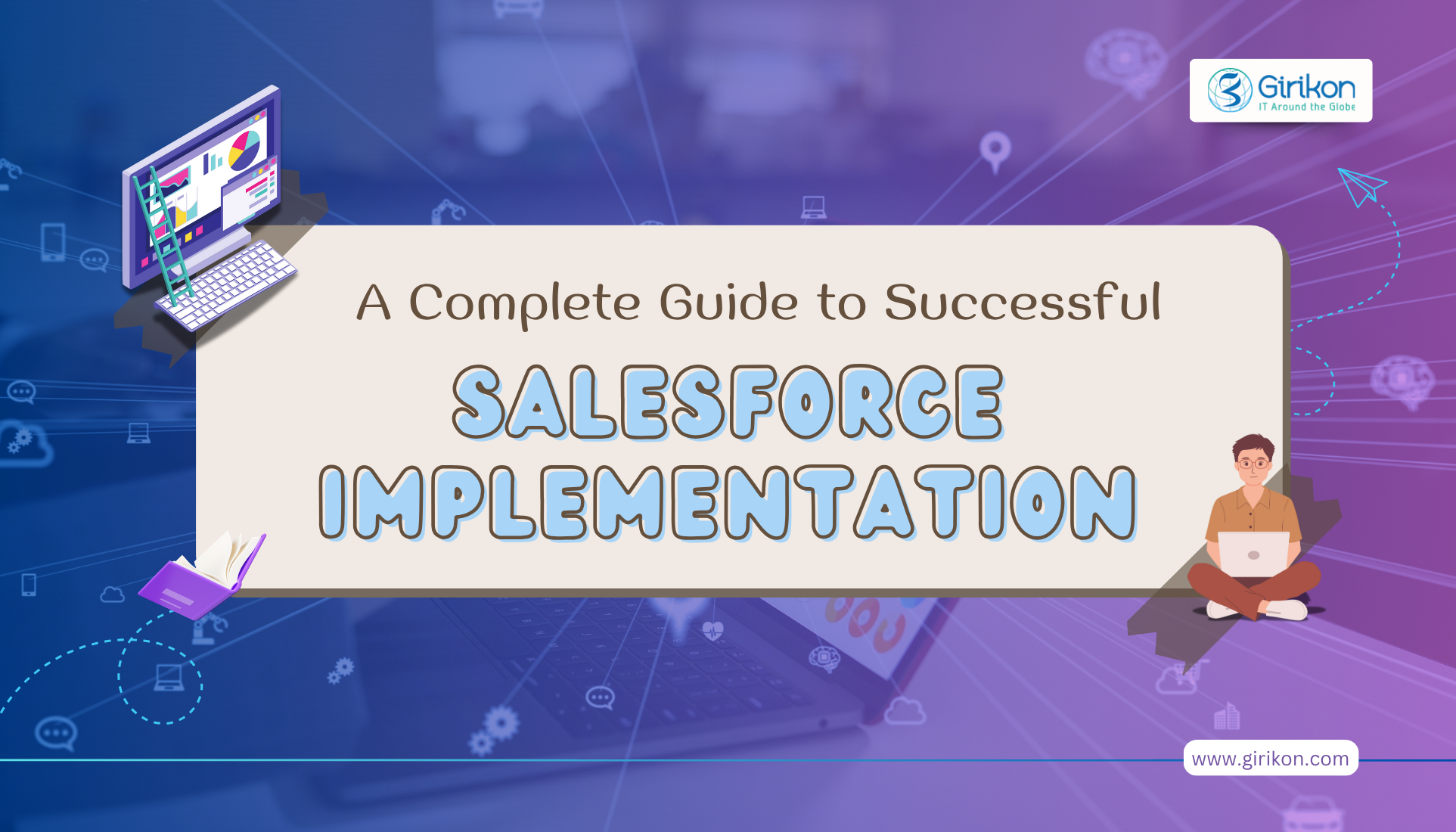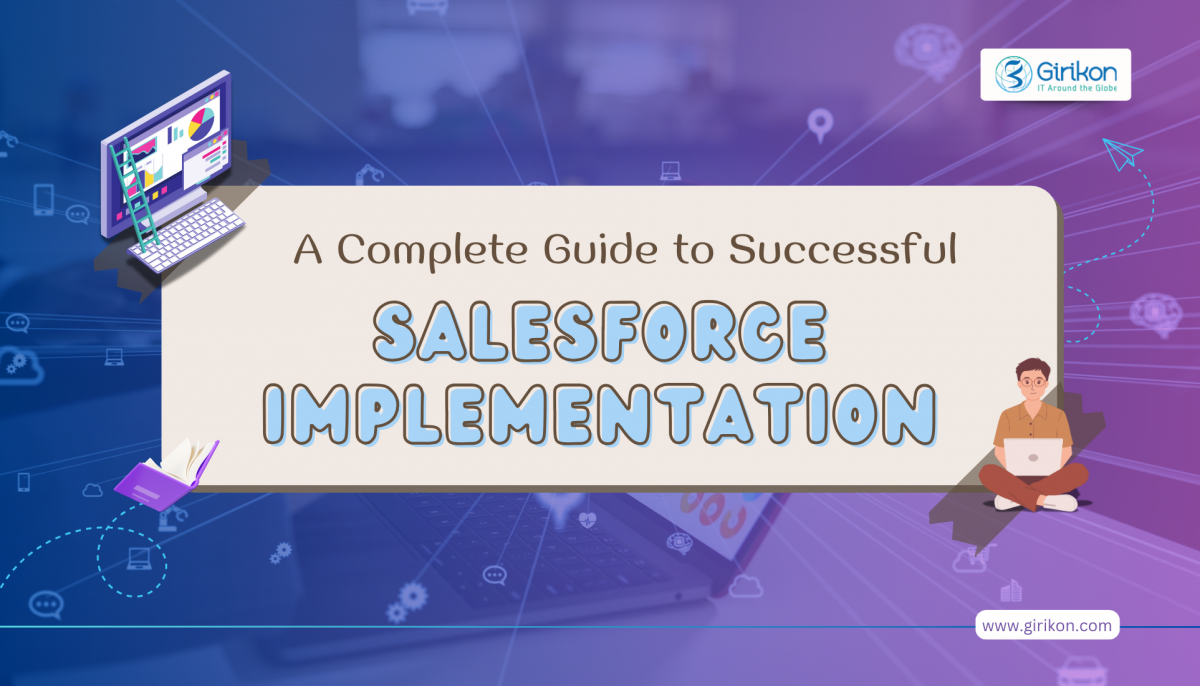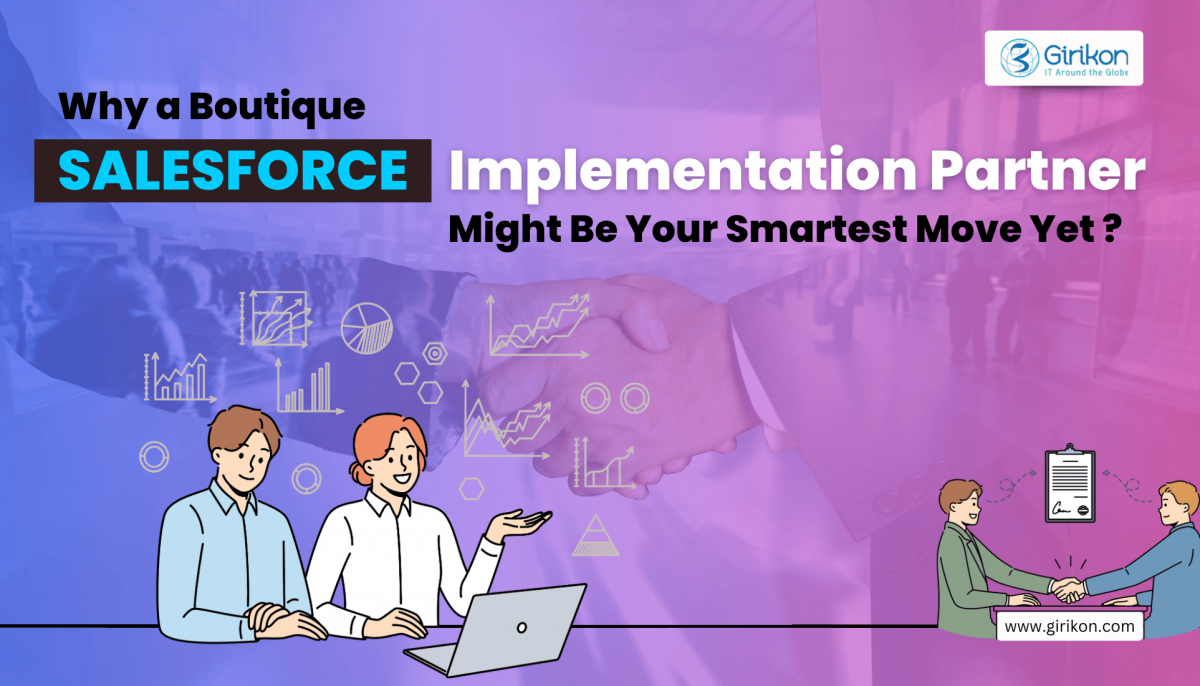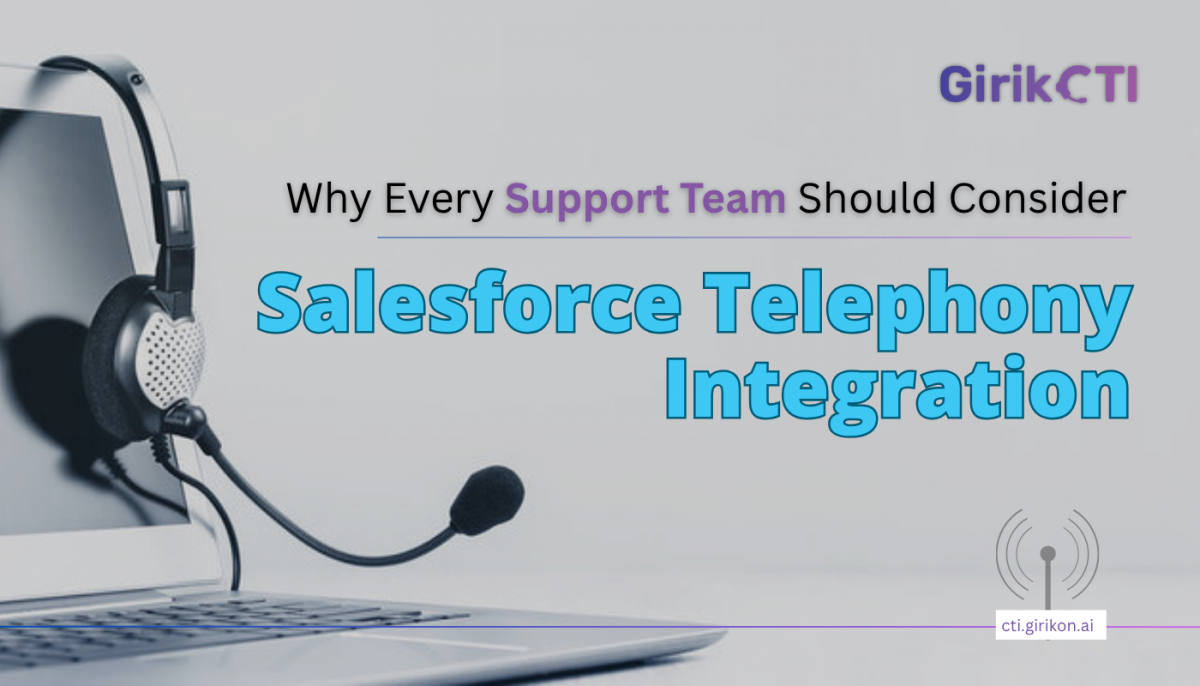Our Blogs
In today’s era of digital transformation, traditional ways of doing business is no longer relevant. Businesses, especially forward-looking ones are leveraging robust technology solutions to stay ahead. Salesforce – a leading provider of cloud solutions has become one of the most adopted CRM platforms by organizations across different industries. Besides providing a unified view of customer data, Salesforce offers robust capabilities, which has helped organizations transform the way they manage customer relationships, automate business processes and drive growth. However, implementing this innovative platform might be tricky and might require technical acumen, strategic planning and comprehending business needs. While several organizations try implementing Salesforce seeking help from their in-house team, they usually underestimate the underlying challenges, which can lead to missed opportunities and wasted resources. Businesses should consider associating with a certified Salesforce Implementation Partner. An experienced partner besides helping businesses overcome these challenges, can help unlock the true potential of the platform.

All About Salesforce Implementation
Salesforce implementation involves setting up the Customer Relationship Management platform according to the unique business requirements of an organization. It’s a 360-degree strategy involving various steps:
Need Assessment: You should begin with defining the goals and objectives of your business. To attain this, make sure to consult with stakeholders across various departments to gather specific needs and expectations.
Strategy and Planning: Next, create a roadmap for your CRM implementation. Define the scope of project, set a clear timeline, allocate crucial resources, and establish key metrics. You must consider partnering with an implementation expert to support the setup while ensuring a smooth rollout.
Customization: To meet the unique processes of your business, you must tailor the system accordingly. This includes configuring the settings, introducing custom fields, and amalgamating the CRM with other tools.
Data Migration: It involves shifting data from your old and outdated system to a new one. This includes transferring all critical data such as sales data and more. Ultimately, the goal is to ensure precise and hassle-free transition without any data loss.
Testing: Next, ensure thorough system testing before the final launch.
Training: Ensure your team is trained to handle the new CRM system. Use training sessions and support resources. You can train your team through various methods by either partnering with an expert, providing hands-on training and more.
Launching the System: Finally, your CRM system is ready to go live. A partner who is ready to fix any issue should be engaged.
Key Benefits of Implementing Salesforce
Unified View of Customer Data: Many businesses struggle with fragmented data across multiple platforms. Salesforce solves this by offering an integrated view of every customer interaction thereby covering preferences, behaviors, and current needs. This all-inclusive perspective enables personalized communication, supports better decision-making, and fortifies customer loyalty.
Streamline Support Process: Salesforce simplifies customer support by combining all customer interactions in a single place. Support agents can access key details such as case history, enabling faster and more effective responses. With AI-powered service tools, agents receive data-driven, step-by-step suggestions to resolve cases efficiently thereby augmenting productivity.
Saves Time: Salesforce accelerates paces up development with its low-code capabilities, allowing teams to build and customize workflows using drag-and-drop tools instead of manual coding. Its AI-powered assistant helps with code completion, speeding up development. Also, Salesforce AppExchange offers thousands of ready-to-use third-party tools, reducing the need to build custom solutions from scratch. This saves developers time on tasks like workflow creation and integration of payment gateway.
Enhanced Communication: While businesses rely on multiple tools for communication, Salesforce brings teams together on a single platform. Its in-built social network enables employees to stay in touch, whether in the office or on the go. With real-time access to customer data, all departments can stay associated and work more efficiently.
Targeted Marketing: The platform streamlines lead management by capturing leads from various channels in a single place. With in-built sales forecasting and sentiment analytics, Salesforce augments opportunity management by enabling teams to make smart and data-driven decisions.
Why Businesses Fail During Salesforce Implementation?
Salesforce implementation often falls flat when businesses lack clear goals, fail to include key stakeholders, or ignore user adoption. Without a well-defined strategy, the CRM might align with the right business needs. Insufficient training and fragile change management diminishes user engagement, while poor data quality and integration challenges can sabotage trust. Over-customizing can make the system complex, while under-customizing limits its effectiveness. Choosing an unfit implementation partner or misjudging the required time and budget adds further risk. For lasting success, organizations need a strategic roadmap, user-friendly setup, clean data, and ongoing support to realize the complete potential of this outstanding platform.
Best Practices for Ensuring Successful Salesforce Implementation
Successfully implementing Salesforce isn't all about getting the technology right, it’s about administering the right strategies to align the platform with your business goals. Here are some proven practices to guide your implementation:
Engage Key Stakeholders: Involve team members from major departments during the planning and rollout stages. Their diverse opinions help shape a solution that truly meets organizational needs and ensures higher adoption across teams.
Scalability: Design your implementation keeping potential growth in mind. Anticipate how your business might evolve and ensure your setup is flexible to scale simultaneously.
Security and Compliance: Salesforce gives strong security features, but how you set them up so that your data stays protected, and your business stays compliant with regulations.
Testing: Make sure to test your Salesforce setup carefully before going live. Try it out with few users first. Their suggestions can help you find and fix any mistakes before launching it for everyone.
To Wrap-up:
Salesforce offers a wide range of benefits—from organizing customer data and boosting sales to improving collaboration, data accuracy, and scalability. But to make the most of these benefits, strategic planning is essential before starting the implementation. If you’re still on the fence about handling the process yourself or lack technical acumen, there’s no need to worry. A certified partner offers necessary expertise to help you guide through every step—from planning to execution. By partnering with one of the best Salesforce consultants will ensure that the implementation aligns with your business goals and deliver desired result.

 +1-480-382-1320
+1-480-382-1320 +44-7428758945
+44-7428758945 +61-1300-332-888
+61-1300-332-888 +91 9811400594
+91 9811400594


















